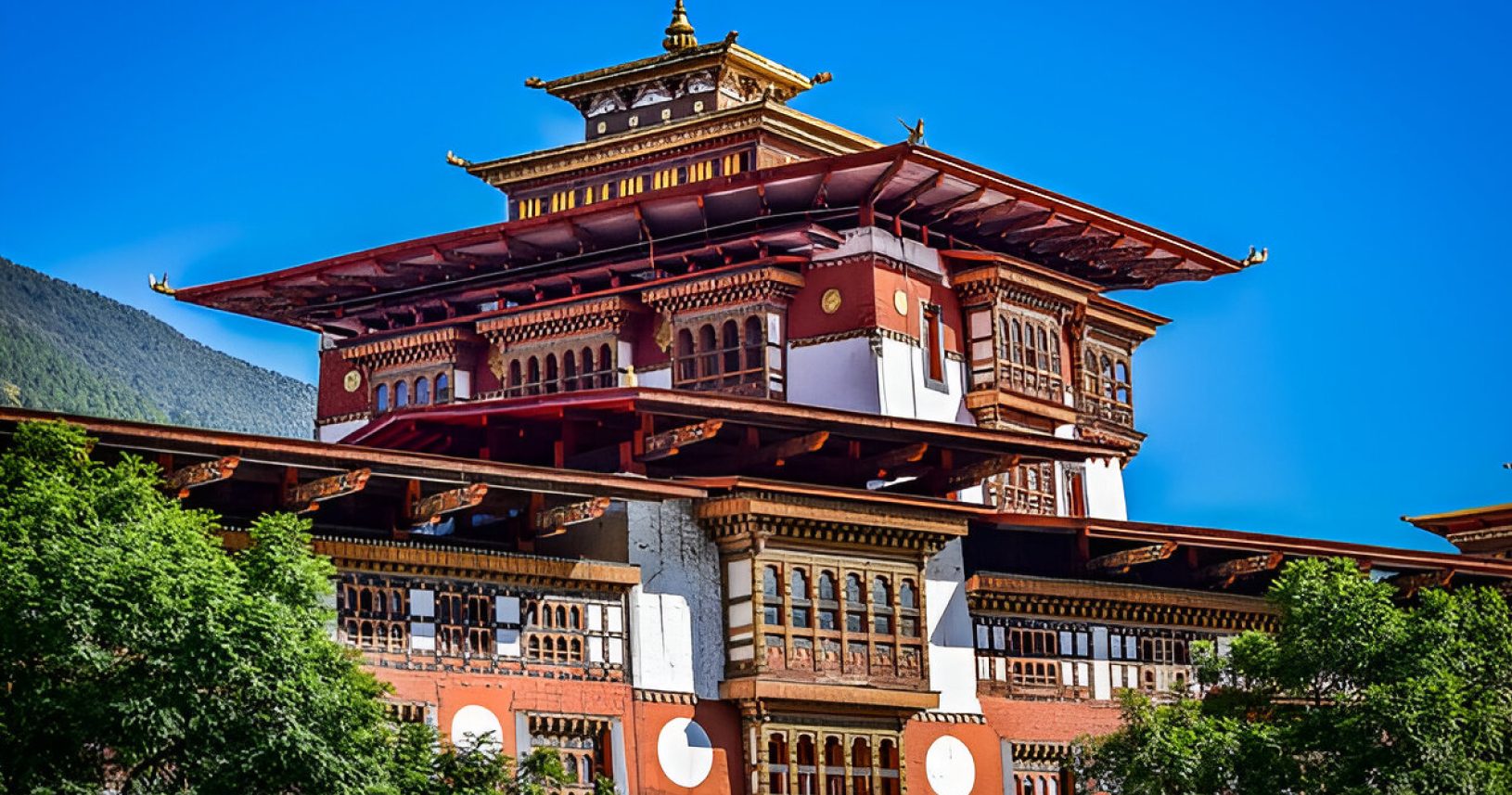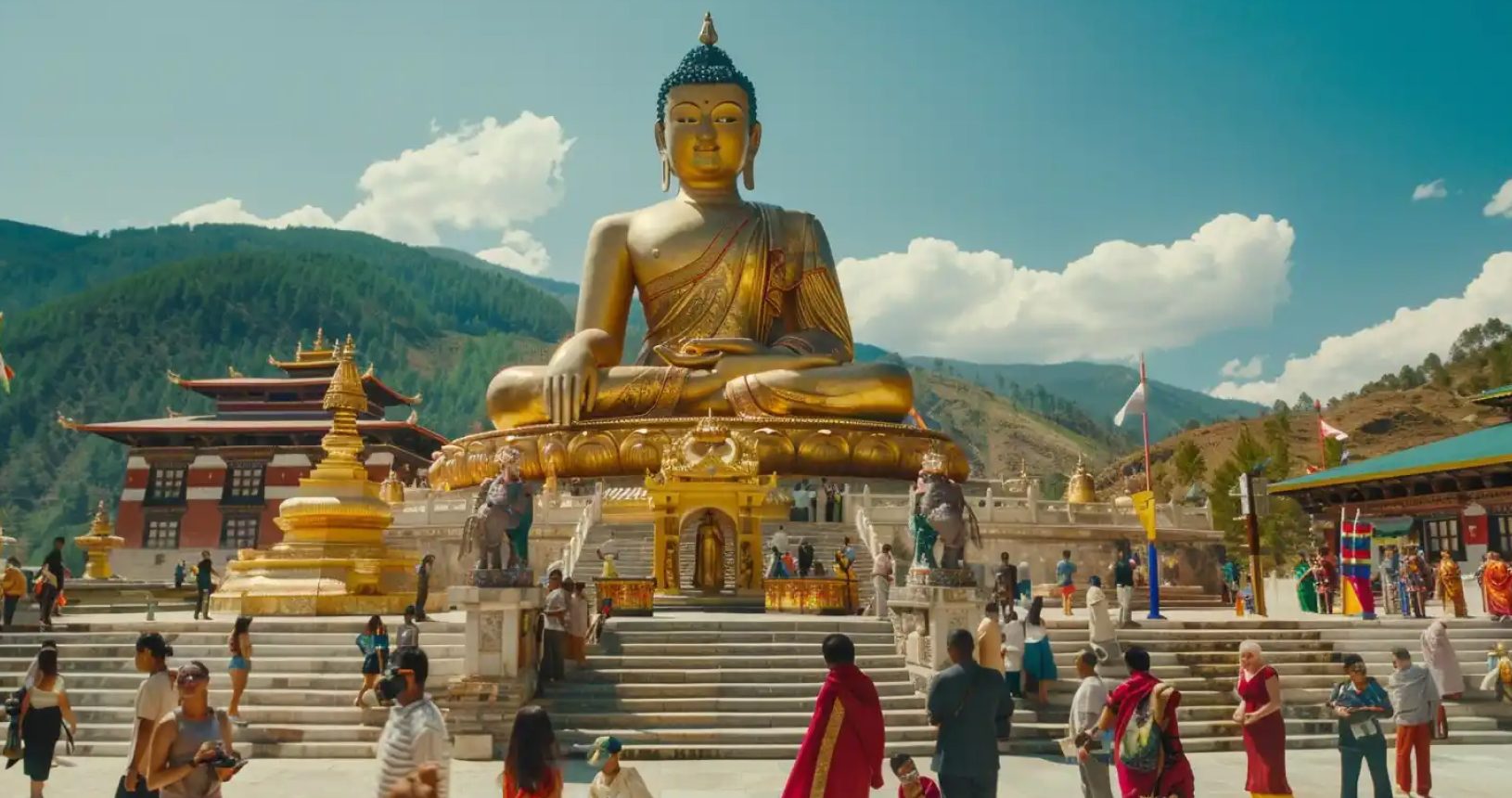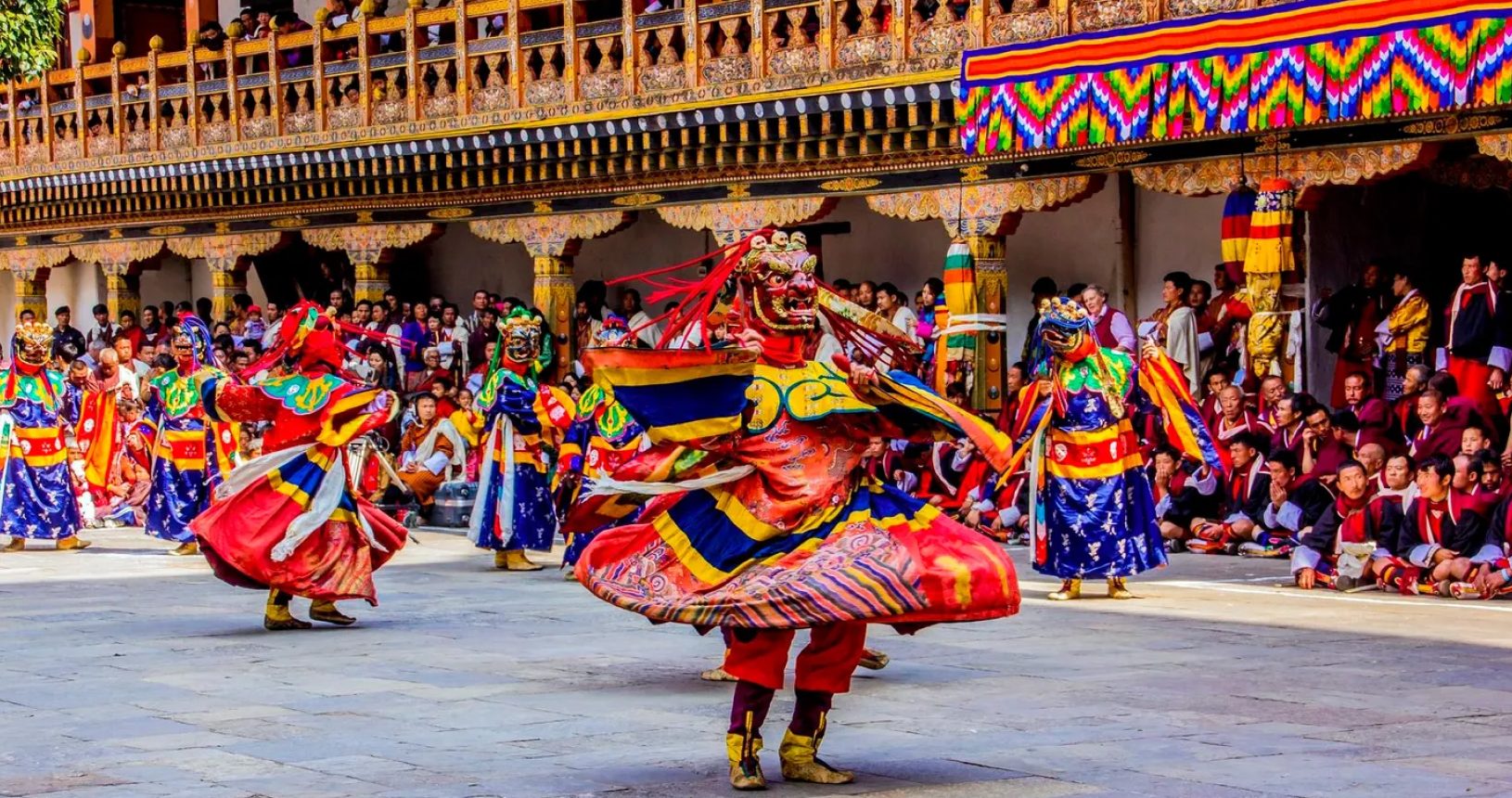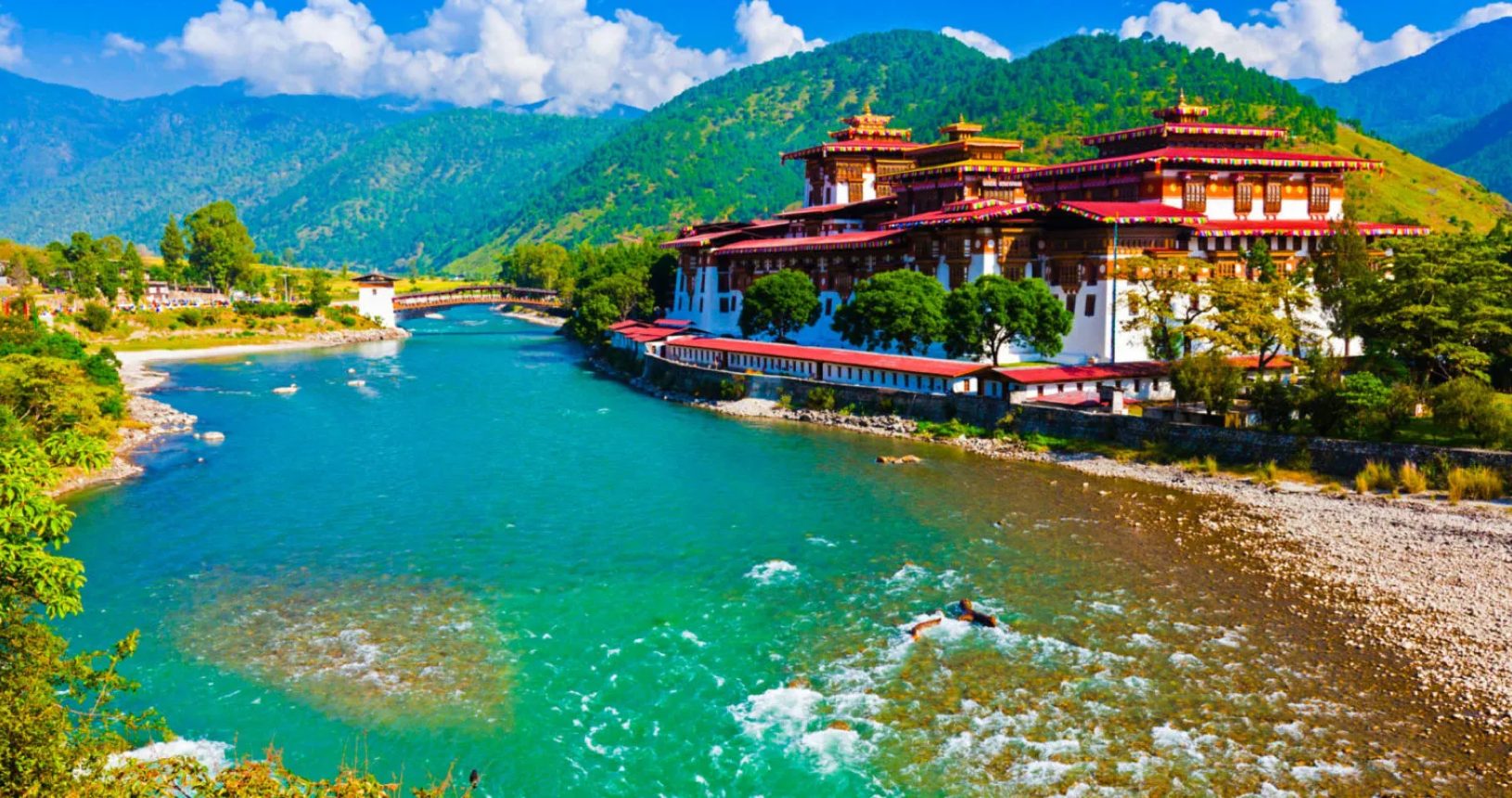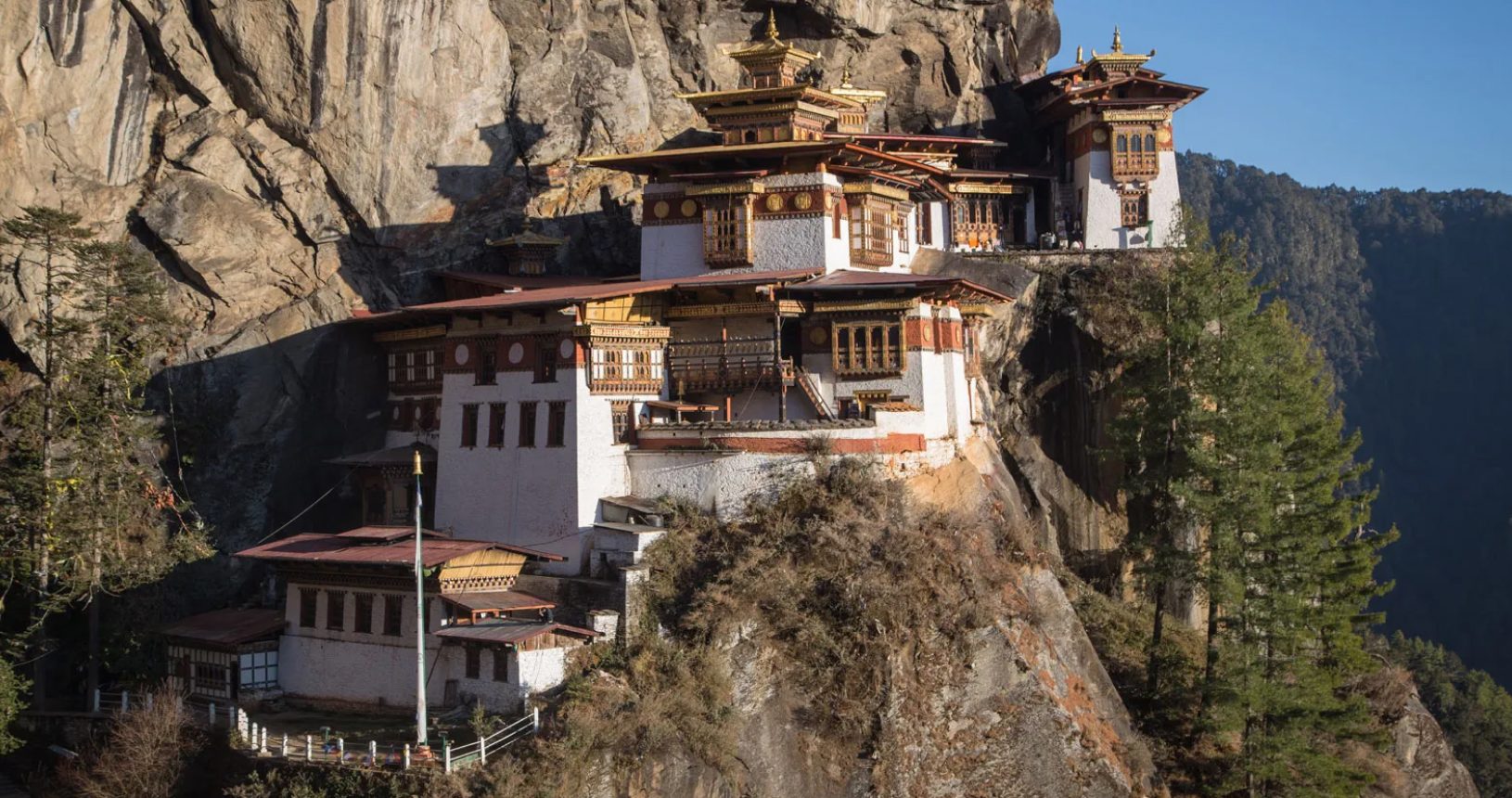Bhutan A Land of Thunder Dragon !
The land of the thunder dragon kingdom is a trekker’s paradise and an environmentalist’s dream. With 72 percent of the country under forest cover, Bhutan’s pristine ecology is home to rare and endangered flora and fauna.
This spiritual land is the last bastion of the Vajrayana school of Mahayana Buddhism which provides the essence of a unique identity for the 7,50,000 people.
Bhutan is a unique blend of the old and new. Here is a country that is slowly opening up to the modern world in a fine balance with its ancient traditions.
Those fortunate enough to visit Bhutan describe it as a unique, deeply spiritual and mystical experience. This kingdom is an adventure like no other.
History
Archaeological evidence suggests Bhutan was inhabited possibly as early as 2000 b.c. Buddhism was probably introduced in the 2nd century although traditionally its introduction is credited to the first visit of Guru Rinpoche in the 8th century. Guru Rinpoche is one of the most important figures in Bhutan’s history, regarded as the second Buddha.
Before the 16th century, numerous clans and noble families ruled in different valleys throughout Bhutan, quarrelling among them and with Tibet. This changed in 1616 with the arrival of Ngawang Namgyal, a monk of the Drukpa Kagyu school of Buddhism from Tibet. He taught throughout the region and soon established himself as the religious ruler of Bhutan with the title Shabdrung Rinpoche. He repelled attacks from rival lamas and Tibetan forces and transformed the southern valleys into a unified country called Druk Yul (Land of the Thunder Dragon). While the political system he established lasted until the beginning of the 20th century, the announcement of the Shabdrung’s death in 1705 was followed by 200 years of internal conflict and political infighting.
Bhutan's First King Ugyen Wangchuck
The fourth King, Jigme Singye Wangchuck, had espoused and implemented the policy of controlled development with particular focus on the preservation of the environment and Bhutan’s unique culture. Among his ideals is economic self-reliance and what has now become widely known as ‘Gross National Happiness’. His coronation on 2 June 1974 was the first time the international media were allowed to enter the Kingdom and marked Bhutan’s debut appearance on the world stage.
Geography
Bhutan is a land locked country, approximately 300km long and 150km wide, with an overall size of 38,394 square kilometres. It is situated along the southern slopes of the Himalayan range between the parallels 26 30′ of north latitude and 88 45′ and 92 25′ of east longitude. It is bounded by Tibet in the north, the Indian Sikkim and Darjeeling districts of West Bengal in the west, on the south by Assam and West Bengal and on the east by the Indian state of Arunachal Pradesh.
Nature
The natural environment is mostly in undisturbed and pristine form. The ecosystem in Bhutan is diverse because of its location, great geographical and climatic variations. Bhutan’s high, rugged mountains and deep valleys are rich with spectacular biodiversity, making one of the world’s ten most important biodiversity ‘hotspots’ Knowing the importance of the natural environment, Royal Government of Bhutan takes its conservations at the heart of its development strategy. Royal Government of Bhutan has also committed in maintaining 60 percent forest cover for all time to come. Currently the total land under forest cover is 65 percent and more than 26 percent of the land is under the protected areas, comprising of four national parks and about 9 percent of the land fall under biological corridors so that the wild life sanctuaries and nature reserves connect protected areas.
Art & Craft
Bhutan’s art and craft reflect the unique spirit and identity of the Himalayan kingdom
The art of Zorig Chosum – or the thirteen arts and crafts of Bhutan – remains very much alive today. They include carpentry, blacksmithing, weaving, sculpting and many of the crafts described below. There are two institutes of Zorig Chosum where these traditional arts and crafts are being taught today – one in the capital, Thimphu, and the other in Trashi Yangtse in eastern Bhutan.
The art and craft continue to thrive despite a small tourist market. Much of this is due to the government’s support and emphasis on the preservation of culture and tradition.
Religion
Buddhism is practiced through out the country. All most all the Bhutanese are Buddhist. In the south, most Bhutanese people of Nepali and Indian origin practiced Hinduism. Yeshi Gonpo or Mahakahala is the main protective deity of Bhutan, often appears in the form of Raven.
Before the arrival of Buddhism to Bhutan, various forms of animistic religion such as bonism were followed by people in Bhutan. In some parts of the country, we can still see, these traditions and rituals are still practiced by minority groups.
Guru Rinpoche brought Buddhism to Bhutan in 8th century. After this, Bhutan has become home to many sages and saints. Some of the key figures of the Bhutanese Buddhism are Kuenkhen Longchen Ramjam, Phajo Drugom Zhigpo, Drukpa Kuenley, Zhabdrung Ngawang Namgyal and Gyalse Tenzin Rabgye.
The official state religion of Bhutan belongs to the Drukpa sect of Kagyudpa, school of tantric Mahayana Buddhism, the Great Vehicle. It is similar to the Tibetan Buddhism, yet it has its own set of unique beliefs and practices.
The religion in Bhutan is strongly supported by all walks of life. Monks, nuns and gomchens (lay priest) play a very important role in the people’s daily lives. The monk body also includes monks, nuns and gomchens who are not part of state sponsored institutions.
Bhutanese people are very pious and the importance of the Buddhism is evident in its every aspect of life in the Bhutanese people.
People
The people of Bhutan can be divided into three main ethnic groups: The “Sharchops”, who live in the east of the country and are believed to be the original inhabitants. The “Ngalongs”, who live mostly in western Bhutan and are the descendants of Tibetan immigrants who arrived in Bhutan from the 9th century, The “Lhotshampas”, settled in the south of Bhutan in the late 19th century. The Lhotshampa (meaning Southern Bhutanese) represent Nepali- speaking groups.
Bhutan is one of the least densely populated countries in the world, with 79 percent of the people living in rural areas.
Bhutan is the only country to maintain Mahayana Buddhism in its Tantric Vajrayana form as the official religion. The main practicing schools are the state sponsored Drukpa Kagyupa and the Nyingmapa. Whereas Buddhism is the main religion in the northern and eastern Bhutan, Southern Bhutanese are mainly Hindus.
Bhutanese art reflects major Tibetan influences, though it has developed many of its own derivations. It has three main characteristics: it is anonymous, religious, and performs no independent aesthetic function. Intricate wall paintings and thankas (wall hangings), most historical writing and fine sculpted images all have a religious theme.
Although both Buddhism and the monarchy are critical elements, it is the general extensive perpetuation of tradition that is possibly the most striking aspect of Bhutan’s culture. This is most overtly reflected in the style of dress and architecture. All Bhutanese continue to wear the traditional dress: the gho for men and the kira for women. Generally colorful apparel, the fabrics used range from simple cotton checks and stripes to the most intricate designs in woven silk.
The Bhutanese architectural landscape is made up of chortens, stonewalls, temples, monasteries, fortresses, mansions and houses. Associated with a number of clear-cut architectural concepts and building types rooted in Tibetan Buddhism, there is a strong association between state, religious and secular forms. What makes it quite unique is the degree of uniformity, with all structures corresponding to traditional designs. Thus ancient monasteries and fortresses appear to merge with more modern popular dwellings to create a setting that is fully internally consistent.

